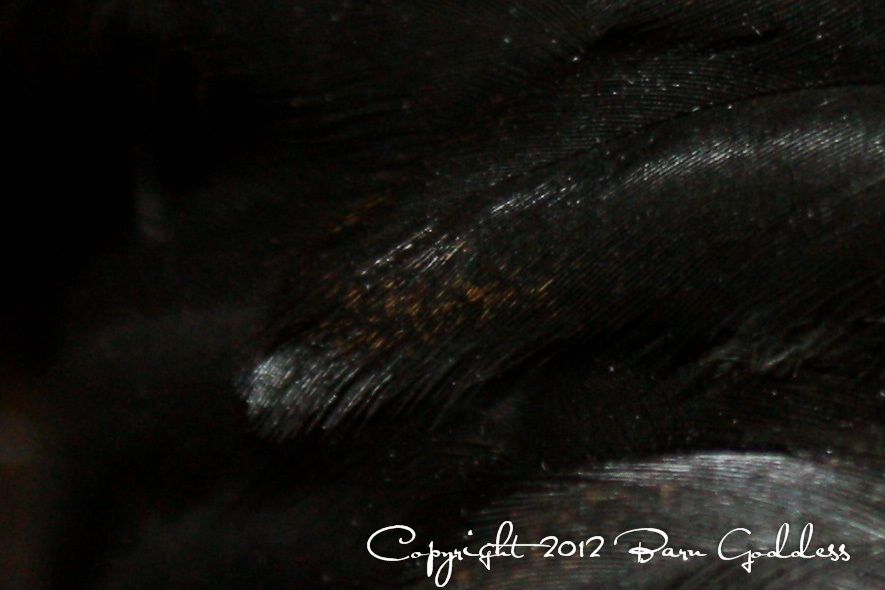I wondered about "mossiness" as she is so young. I will get more pictures of her today - a week later.
I have to admit, Don, I'm finding the prospect of breeding Black Coppers daunting. As I read/learn about genetics, travel to the shows, and talk to breeders, I am learning that it is a complicated colour to work with, probably not for beginners and small timers such as myself. You need to have A LOT of birds to choose from in order to make good choices with this variety. And then there are all the additional issues of working with such a new breed and all the other nonsense that crops up with combs and leg feathering etc. I think I need to focus on something that allows me to learn more about type, where the minor details are a little more consistant. I'm sure it doesn't help that all my mature black coppers are all out of blue coppers.
That said, I'm still growing out my BCMs from Crossroads. I ended up with 2 pullets and a cockerel. 1 of the pullets and the cockerel look quite decent so far so who knows. The other pullet is
very pretty but she has the short outside toes. (I don't remember what the official name for that is.)
I really like my Blue Copper boy even with his clean legs so I probably will fool around with him a bit. My breeding pens are underway.
Nothing stopping me from learning from what I DO hatch, at any rate!!






